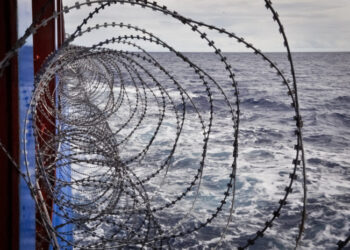Southeast Asia Piracy remains a clear threat to seafarers
(Image Credit: OBP)
Oceans Beyond Piracy (OBP) is going to host an event this afternoon (June 10, 2015 in the Pall Mall room of The Army and Navy Club (The Rag) in London, UK) to discuss the findings of the report that covers the continued human and economic costs in East and West Africa, as well as give a first look at the cost of piracy in Southeast Asia.
(You may click on the image for a larger view)
|
Highlights of this year’s panel discussion will include:
|
OBP has already published an executive summary of the report which reveals the following data of maritime activity in Southeast Asia, Western Indian Ocean Region and Gulf of Guinea for 2014:
Maritime Piracy in SE Asia
- 40% of the seafarers affected by piracy were from countries within the SE Asia region
- Physical abuse of seafarers was reported in 28% of incidents
- The kidnapping for ransom model is absent in SE Asia. Pirates show a callous disregard for seafarers
- The complex nature of maritime jurisdictions in the region presents many challenges for the reporting and classification of events.
- SE Asia recorded the highest rate of successful attacks of the three regions OBP assessed in this years report.
- 93% boarding rate in SE Asia could be affected by reporting ambiguities and vulnerable shipping patterns.
Maritime Piracy in the Western Indian Ocean Region
- International navy coalition mandates remain unchanged, but fewer assets have been committed to the missions
- The International Bargaining Forums High Risk Area was adjusted in mid-2014, reducing the estimated number of transits – and therefore seafarers – eligible for hazard pay by 50%
- Industry Best Management Practices(BMP),the defined High Risk Area (HRA) and the Joint War Committee (JWC) Listed Area for war risk insurance have not changed since 2012, but re-routing and observed speeds continue to decline and insurance premiums have dropped steadily since the height of the piracy crisis
- Percentage of vessels employing armed guards remained stable, but teams are getting smaller and more diverse due to cost pressures
- Accounts from released hostages in 2014 (11 hostages from MV Albedo held for 1,288 days & 7 hostages from MV Asphalt Venture held for 1,492 days) revealed the full extent of torture and mistreatment inflicted on seafarers.
- 26 hostages (all taken from FV Naham 3 – hijacked 26 March 2012) remain at very high risk due to poor conditions of confinement ashore and slow negotiations.
Maritime Piracy in Gulf of Guinea
- Region significantly increased priority for developing its maritime security infrastructure, but capacity still lacking
- Over half of the total economic cost attributed to military operations.
- Ransom costs estimated at $1.6 Million, but confidential systems of payment make true cost difficult to obtain.
- OBP estimations show 29% of total costs attributable to regional states.
- Information related to the impact of piracy attacks on seafarers is limited due to reporting challenges
- Seafarer awareness and advocacy more challenging in the Gulf of Guinea
- Regional seafarers at greater risk due to intimidation from local perpetrators
- No piracy prosecutions/No accountability for criminals
Further data/ figures as well as infographics may be found by reading the Executive Summary of the OBPs report on the Human and Economic Cost of Maritime Piracy
Also read previous OBPs reports:
- The Economic and Human Cost of Piracy
- Latest OBP Report notes factors behind reduction in cost of Somali Piracy
- OBP releases updated report on economic cost of Somali piracy for 2012
- Human Cost of Piracy Report 2012 Published
Source and Image Credit: OBP



































































